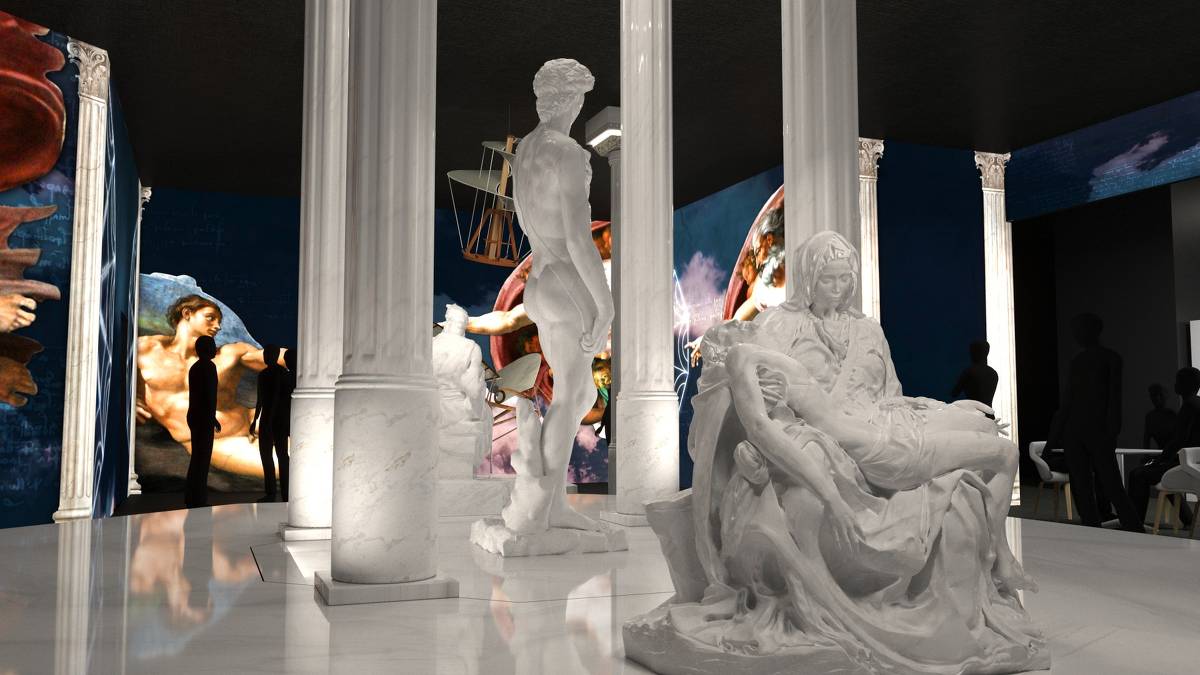Contemporary art has entered a new dimension—literally—as artists around the world embrace microscale creation, crafting masterpieces so small they challenge our perception of what art can be.
🔬 The Renaissance of Miniature Art in the Digital Age
The world of contemporary microscale art represents one of the most fascinating intersections of traditional craftsmanship and modern technology. While miniature art has existed for centuries—from illuminated manuscripts to Persian miniatures—today’s artists are pushing boundaries that would have been unimaginable to their predecessors. Using advanced tools like precision microscopes, micro-engraving equipment, and even nanotechnology, contemporary artists are creating works that exist at the threshold of human visibility.
This artistic movement has gained significant momentum over the past decade, fueled by social media platforms that allow these invisible wonders to reach global audiences through macro photography and videography. What makes contemporary microscale art particularly compelling is not just the technical achievement, but the conceptual questions it raises about value, permanence, and the nature of artistic appreciation in an age of digital reproduction.
Pioneers Redefining Artistic Boundaries
Several contemporary artists have established themselves as leaders in the microscale art movement, each bringing unique approaches and philosophies to their work. Willard Wigan MBE, perhaps the most recognized name in microscale sculpture, creates pieces that fit inside the eye of a needle. His works include everything from miniature replicas of the Statue of Liberty to portraits of historical figures, all invisible to the naked eye.
Another notable figure is Jonty Hurwitz, who combines art with science to create anamorphic sculptures at microscopic scales using a technique called multiphoton lithography. His “nano sculptures” are so small that they can be placed on a human hair or positioned between the legs of an ant. These works exist at scales measured in micrometers, requiring electron microscopes to be properly viewed.
Artist Dalton Ghetti takes a different approach, carving intricate sculptures into the graphite tips of pencils. While not quite microscopic, his works demonstrate incredible precision, featuring everything from miniature chains with functioning links to alphabet letters and portraits. Each piece can take months or even years to complete.
⚙️ Tools and Techniques Behind the Tiny Masterpieces
Creating art at microscale requires specialized equipment and extraordinary patience. Most microscale artists work under high-powered microscopes, often using binocular or surgical microscopes that provide magnification ranging from 10x to 400x or more. The workspace must be completely stable, as even a heartbeat or breath can cause enough movement to ruin delicate work.
Tools used in microscale creation are equally specialized. Many artists craft their own instruments, sharpening surgical needles, modifying dental tools, or creating custom implements from various materials. Some artists work with eyelash hair fragments attached to sticks, while others use laser technology for precision cutting or 3D printing at nanoscale using advanced lithography techniques.
The physical challenges are significant. Artists must often work between heartbeats, timing their movements to avoid the natural tremors of the human body. Some practice meditation techniques to achieve the necessary stillness and focus. The work environment must be climate-controlled, as temperature fluctuations can cause materials to expand or contract at microscale.
Materials That Make Magic Possible ✨
The choice of materials in microscale art varies dramatically based on the artist’s technique and vision. Traditional sculptors working at this scale often use precious metals like gold, which is malleable yet durable enough to maintain fine detail. Gold’s resistance to oxidation also ensures longevity, an important consideration when pieces are so small that cleaning or restoration would be nearly impossible.
Other common materials include:
- Graphite from pencil leads, favored for its structural consistency
- Human hair, which provides both a canvas and structural element
- Photoresist polymers used in nanotechnology applications
- Synthetic crystals and diamonds for permanent nano-scale works
- Specialty plastics developed for micro-manufacturing
- Natural materials like grains of sand or rice
Artists working with nanotechnology may use materials that respond to light or chemical processes, creating sculptures through photopolymerization or similar techniques. These works often exist at scales where traditional sculptural concerns like gravity become less relevant than molecular forces.
The Paradox of Invisible Art
One of the most intriguing philosophical dimensions of microscale art concerns its visibility—or lack thereof. If a sculpture is too small to be seen with the naked eye, can it still be experienced as art? This question challenges fundamental assumptions about artistic appreciation and the relationship between artwork and audience.
Most microscale artists address this paradox through documentation. High-resolution photography and videography become essential components of the artistic practice, not merely documentation but an integral part of how the work exists in the world. Some argue that this makes microscale art inherently contemporary, as it relies on technological mediation between object and observer.
The experience of viewing microscale art often involves revelation and wonder. Gallery installations typically feature the actual microscale work alongside magnified images or video feeds from microscopes, creating a dual experience. Viewers can intellectually grasp that the tiny speck before them contains an elaborate sculpture, even while their senses cannot directly perceive it.
🎨 Themes and Concepts in Contemporary Microscale Work
Beyond technical achievement, contemporary microscale artists explore meaningful conceptual territory. Many works comment on themes of invisibility, overlooked details, and the relationship between scale and significance. In a culture obsessed with bigger, louder, and more visible statements, microscale art whispers its message.
Environmental themes appear frequently in microscale work. Some artists create miniature ecosystems or endangered species, using scale to comment on fragility and the ease with which small things can disappear. The painstaking care required to create these works mirrors the attention needed to preserve vulnerable natural systems.
Other artists explore personal and psychological themes. The intense focus required for microscale creation becomes a form of meditation, and the works themselves can represent internal states, memories, or emotions that feel microscopic within the vastness of human experience. The act of making something significant from something tiny mirrors psychological processes of finding meaning in small moments.
Commercial Realities and Market Dynamics
The market for microscale art presents unique challenges. How does one price, sell, and display artwork that cannot be seen without specialized equipment? Some microscale artists have found success creating limited edition pieces sold with viewing equipment, essentially packaging the complete viewing experience.
Commissioned works represent another revenue stream, particularly from collectors fascinated by the novelty and technical achievement. Some microscale sculptures have sold for hundreds of thousands of dollars, their value derived from the artist’s reputation, the work’s uniqueness, and the extraordinary skill required for creation.
Documentation and reproduction rights also factor into the economics of microscale art. Prints, posters, and digital reproductions of magnified images can reach wider audiences and provide more accessible price points, though this raises questions about what exactly is being purchased—the object itself or its representation.
🎓 Educational Applications and STEM Integration
Microscale art has found unexpected relevance in educational contexts, particularly in STEM education. The intersection of artistic creativity and scientific technique makes it an excellent vehicle for engaging students across disciplines. Educational programs have incorporated microscale art projects to teach principles of optics, material science, fine motor skills, and patience.
Museums and science centers increasingly feature microscale art in exhibitions that bridge art and science. These displays effectively communicate scientific concepts about scale, magnification, and precision while simultaneously showcasing human creativity and skill. The visual impact of seeing elaborate artworks at extreme magnification captures attention in ways that purely scientific or artistic presentations might not.
Some artists collaborate directly with scientists and engineers, using artistic approaches to explore and communicate scientific phenomena. These collaborations have produced works that function simultaneously as research, art, and education, demonstrating the potential for interdisciplinary approaches to knowledge creation.
Social Media and the Democratization of Microscale Art
Social media platforms have transformed how microscale art reaches audiences. Instagram, YouTube, and TikTok allow artists to share macro photography and time-lapse videos of their creation processes, bringing microscale works to millions of viewers who would never encounter them in galleries. This digital presence has been crucial for building artist reputations and generating interest in the medium.
The viral nature of social media content particularly suits microscale art. The “reveal” moment when a camera pulls back to show the true scale of a piece provides satisfying content that viewers enthusiastically share. Videos showing the creation process generate fascination, as viewers watch impossibly detailed work emerge under magnification.
This visibility has inspired a new generation of microscale artists who share techniques, challenges, and achievements online. Digital communities have formed around microscale creation, with artists supporting each other despite geographical separation. This networked approach to what was once an isolated practice has accelerated technical innovation and artistic exploration.
🔮 Future Horizons: Where Microscale Art is Heading
The future of microscale art likely involves even greater integration with advancing technology. As 3D printing technology continues to improve resolution, artists gain new capabilities for creating complex structures at tiny scales. Some artists are already experimenting with bio-printing techniques, creating microscale works using living cells as medium.
Augmented and virtual reality technologies present exciting possibilities for experiencing microscale art. Imagine viewing exhibitions where AR overlays allow you to see microscale works magnified in real-time through your device, or VR experiences that place you “inside” a microscale sculpture, experiencing it at human scale in virtual space.
Nanotechnology research continues advancing the lower boundaries of scale at which creation is possible. Some artists are collaborating with nanotechnology researchers to create works at molecular scales, where individual atoms might be positioned intentionally. At these scales, art begins to merge with fundamental physics, raising profound questions about intention, creativity, and what constitutes “making.”
Challenges and Limitations of the Medium
Despite its fascinations, microscale art faces genuine limitations. Preservation presents significant challenges—how do you protect, store, and maintain artworks that can be destroyed by a breath or a speck of dust? Many microscale works are extremely fragile, and their small size makes them vulnerable to loss simply through misplacement.
The time investment required for microscale creation limits productivity. A single piece might require hundreds or thousands of hours to complete, making it difficult for artists to sustain practices financially unless they command high prices or supplement income through teaching, speaking, or other activities.
Physical limitations affect who can practice microscale art. The work requires excellent vision (even with magnification), extremely steady hands, and patience that not everyone possesses. As artists age, maintaining the necessary precision becomes increasingly difficult, potentially limiting career spans.
💫 The Enduring Appeal of the Infinitesimal
What drives artists to work at scales that challenge human perception? For many, microscale creation represents the ultimate test of skill and patience. The extreme difficulty becomes part of the point—these works exist as monuments to what focused human effort can achieve. In an age of instant gratification and rapid production, spending months creating something nearly invisible makes a countercultural statement.
There’s also something fundamentally hopeful about microscale art. It suggests that significance isn’t determined by size, that careful attention can reveal extraordinary complexity in the smallest spaces. In a world facing enormous challenges, microscale art reminds us that profound change sometimes happens at scales we cannot immediately see.
The practice itself—requiring meditation-like focus, extreme patience, and surrender to a process that cannot be rushed—offers practitioners something valuable beyond the finished artwork. Many microscale artists describe their work as spiritual practice, a form of moving meditation that provides meaning regardless of commercial outcomes.
Experiencing Microscale Art as a Viewer
For those interested in experiencing microscale art firsthand, opportunities exist beyond gallery visits. Some museums maintain permanent microscale art collections, with viewing stations equipped with microscopes or high-resolution display screens. These installations often include explanatory materials about techniques and tools, providing context for the remarkable works on display.
Artist studios occasionally offer open houses or workshops where visitors can observe the creation process and sometimes try their hand at microscale techniques under guidance. These experiences provide visceral understanding of the challenges involved that photographs cannot fully convey.
Online exhibitions have become increasingly sophisticated, with virtual galleries offering zoomable high-resolution images that allow detailed examination of microscale works. While not replacing in-person viewing, these digital exhibitions make microscale art accessible to global audiences regardless of geographical limitations.
The world of contemporary microscale art continues expanding, driven by artists who find meaning and challenge in working at the edge of visibility. Their tiny masterpieces remind us that art’s power isn’t measured in inches or square footage, but in the ideas communicated, the emotions evoked, and the boundaries challenged. As technology advances and new artists discover this demanding medium, microscale art will likely continue surprising, delighting, and provoking viewers—proving definitively that in art, as in life, the smallest things can carry the greatest significance. 🎨
Toni Santos is a visual chronicler and historical researcher who explores the lost language of healing through forgotten instruments and ancient medical design. With a delicate blend of curiosity and reverence, Toni uncovers the mysterious tools once used in temples, apothecaries, and folk practices—objects that echo a time when healing was both art and ritual.
Rooted in a fascination with the intersection of medicine, myth, and craftsmanship, his work traces how past civilizations understood the body, spirit, and cosmos through tools now obscured by time. From vibrational tuning forks and herbal infusion vessels to symbolic scalpels carved with protective motifs, Toni’s visual storytelling gives new life to the technologies that once held deep cultural and curative power.
With a background in historical illustration and material culture, Toni reconstructs these instruments with artistic precision—offering not just images, but narratives that reveal the beliefs, fears, and hopes embedded in the tools of care.
As the visionary behind Vizovex, Toni shares curated archives, interpretive essays, and artifact-inspired artworks that help audiences reconnect with the ancestral roots of healing and the poetic devices once used to restore balance.
His work is a tribute to:
The craftsmanship of early healing technologies
The spiritual symbolism behind medical instruments
The intimate connection between body, tool, and ritual
Whether you’re an enthusiast of forgotten sciences, a student of holistic traditions, or a seeker of the obscure, Toni welcomes you into a world where healing was sacred, and every tool told a story—one wound, one charm, one cure at a time.





